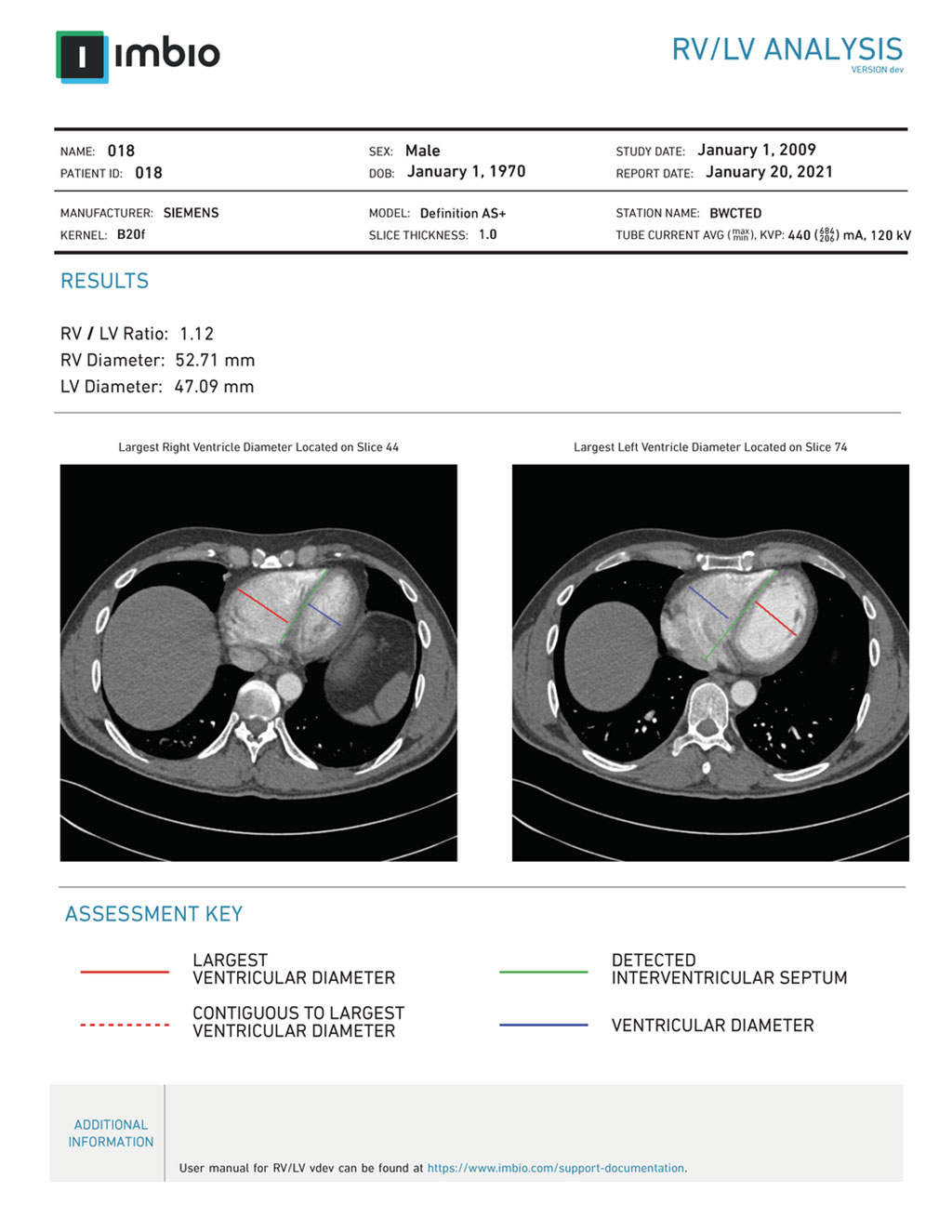Cardiothoracic Imaging Algorithm Automates Ventricular Assessment
By MedImaging International staff writers
Posted on 31 Mar 2021
A novel algorithm enables measurement of the cardiac ventricles and calculation of the associated RV/LV ratio from CT images. Posted on 31 Mar 2021
The Imbio (Minneapolis, MN, USA) RV/LV Analysis algorithm is a rapid, automated assessment tool that quickly and accurately measures the ventricles of the heart via quantitative evaluation of four-chamber computed tomography (CT) axial images in order to provide the ratio between the maximum diameter of the RV, as compared to LV diameter, which can be indicative of several pulmonary and cardiopulmonary diseases, such as pulmonary embolism (PE), and can aid in risk stratification.

Image: A sample RV/LV Analysis report (Photo courtesy of Imbio)
The RV/LV ratio results are added directly to the patient’s imaging study, and within minutes of the analysis. In addition to real-time RV/LV ratio, varying causes of right ventricular dilatation may also be captured earlier, if RV/LV automation is routinely implemented within native clinical imaging workflows. With the ability to run the automated analysis and have results available at the time of the initial clinical reading, it may potentially save reporting time as well.
“Imbio is proud to deliver this AI-driven algorithm to clinicians and our partners to support acute cases and assist in key treatment decisions for patients,” said David Hannes, CEO of Imbio. “Our automated RV/LV Analysis has the power to provide vital information and inform risk stratification in many acute cases. We believe that the routine use of the RV/LV Analysis in clinical practice can also enable more consistent, quantitative reporting of potential right heart strain for all CTPA exams.”
“Reporting right heart strain on CT pulmonary angiogram studies positive for pulmonary embolism, despite what we are inclined to think, is frequently done inconsistently, incorrectly, or not at all,” said radiologist Jonathan Rodrigues, MD, of the Royal United Hospitals Bath NHS Foundation Trust (United Kingdom). “We have shown Imbio's RV/LV Analysis to work consistently in unselected real-world cases and have demonstrated how it could alter management, as well as potentially predict all-cause mortality.”
Quantitative cardiac CT measurements obtained on axial CT images, namely the RV short axis, the LV short axis, and particularly the RV/LV short axes ratio, have shown a significant positive correlation with the severity of PE; an RV/LV diameter ratio superior to 1.5 indicates a severe episode of PE. In addition, an RV/LV diameter ratio greater than 0.9 can be used to predict the occurrence of a range of adverse clinical events, such as 30-day mortality, the need for cardiopulmonary resuscitation (CPR), mechanical ventilation, and more.
Related Links:
Imbio














